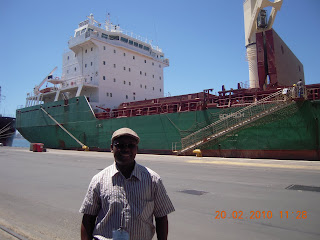Fostering Regional Integration: Shire-Zambezi Waterway Project

The proposed Shire-Zambezi Waterway (S-ZW) Project has brought hope to the Governments and the people of many nations in Southern and Eastern Africa. This is why the Southern African Development Community (SADC), the Common Market for Eastern and Southern Africa (COMESA) and the New Partnership for African Development (NEPAD) are in support of the S-ZW Project. The project is expected to reduce the cost of transporting goods to and from the sea by over 50 percent. Besides that, by providing transport infrastructure for a number of countries including Malawi, Zambia, Zimbabwe, Mozambique, DRC and Tanzania, the project will foster regional integration, a necessary step for the actualisation of the African Union's vision of an United African Government.
It has been recently reported that Mozambique seems to be not favouring the S-ZW project. I agree with those calling for serious and tactiful diplomacy to get the S-ZW Project accepted by all parties, most importantly the Mozambican Government, who have other options, in so far as transporting their goods to the sea-ports is concerned.
Such diplomatic effort should be held at regional (SADC/COMESA) and even AU level - we have been talking about the need for greater trade co-operation and regional integration - projects such as the S-WZ help to foster this. By integrating we will also boost our competitiveness in world trade.
The S-ZW is not just a bilateral issue between Malawi and Mozambique, it is a regional project potentially catering for Zambia, Zimbabwe, Malawi, Tanzania, DRC and Mozambique itself.
Mozabique is currently planning a new railway line from Moatze to the Port of Nacala possibly via Malawi. Such a project can be harmonised into the S-WZ - requiring that such a railway line is linked to the S-WZ.
The Mozambican Government has a point in insisting that the Environmental Impact Assessment (EIA) is completed and its results are satisfactory to warrant the implementation of the S-ZW project. With so many transport options at their disposal, the Moz Govt is not too keen on the project - they need to be persuaded. The ecological and biodiversity contributions of the Shire and Zambezi rivers cannot be overemphasised - it requires therefore, a strong EIA justification to assuage Mozambique's fears. The most likely questions lingering in their minds include:
1) What happens to existing road and railway lines when the S-ZW takes off? The Nacala and Beira corridors play an important economic role to the Mozambican economy. How about the existing port infrastructure at Nacala and Beira?
2) What are the potential impacts of the S-ZW on the ecology and biodiversity of the Shire and Zambezi river basins?
The answers to the first question should lie in how we can harmonise the two transport systems - they surely can complement each other largely or particularly for internal movement of goods - the Beira corridor can feed into the S-ZW and viceversa. Because of incoming goods from Zambia, Malawi and Zimbabwe, port services at Beira can increase thereby compensating for potential downturn at Nacala, for example.
The answers to the second question would best be answered by the EIA - it is obvious that the will be externalities (social costs) as a result of the project arising mostly from pollution and dredging. There is no project that is free of externalities! The question usually is at what cost can we accept these externalities? What are the potential benefits of the S-ZW - social, economic, political etc? Do the benefits outweigh the cost of externalities? Can the externalities be mitigated? If the answers to the latter two questions are YES then the S-ZW project should be approved by all parties concerned.
By and large, the consultants undertaking the EIA should speed up the production of their report. They will not want to be used as an excuse for the failure of the project, whic seems to be currently the case.
Surely, diplomacy now is the main key to keep the Mozambique Government in favour of the project. I am aware, that they have so far been supportive of the project. On 1 August they inaugurated a new bridge over the Zambezi River, the “Armando Emilio Guebuza Bridge” which links Sofala and Zambezia provinces in the centre of the country. The bridge is 2,376 metres long with two lanes for vehicles, two hard shoulders to be used in the event of breakdowns, and two walkways for pedestrians. It is the second longest bridge in the country, beaten only by the bridge linking Mozambique Island to the mainland in Nampula province. The bridge has been designed to be high enough to allow for small vessels to pass below it.
I personally saw this bridge under construction around June 2008 and chatted with one of the engineers who confirmed that the long span of the bridge was to allow the bridge to be high enough to cater for vessels passing through should the S-ZW project take-off.
Kennedy Lweya, PhD
Khartoum - Sudan

